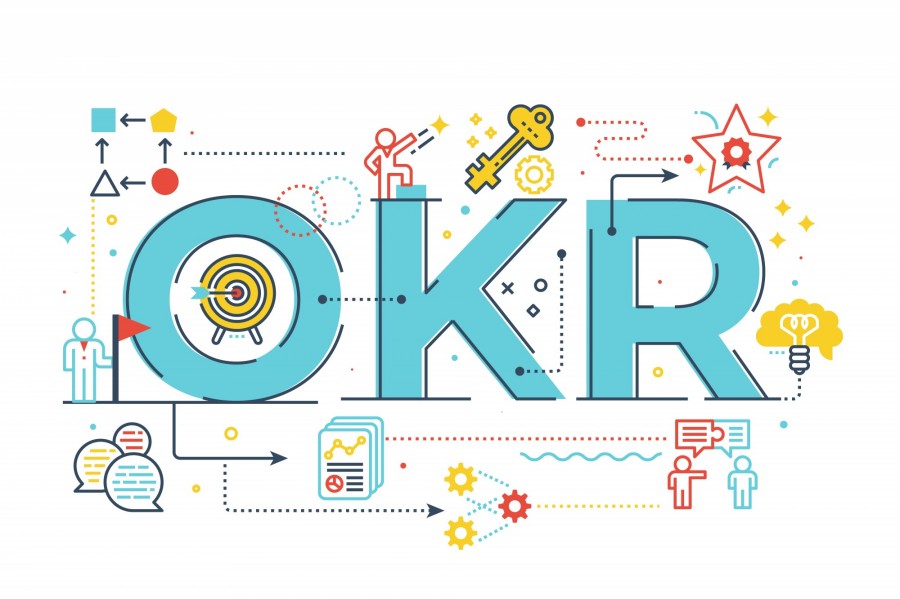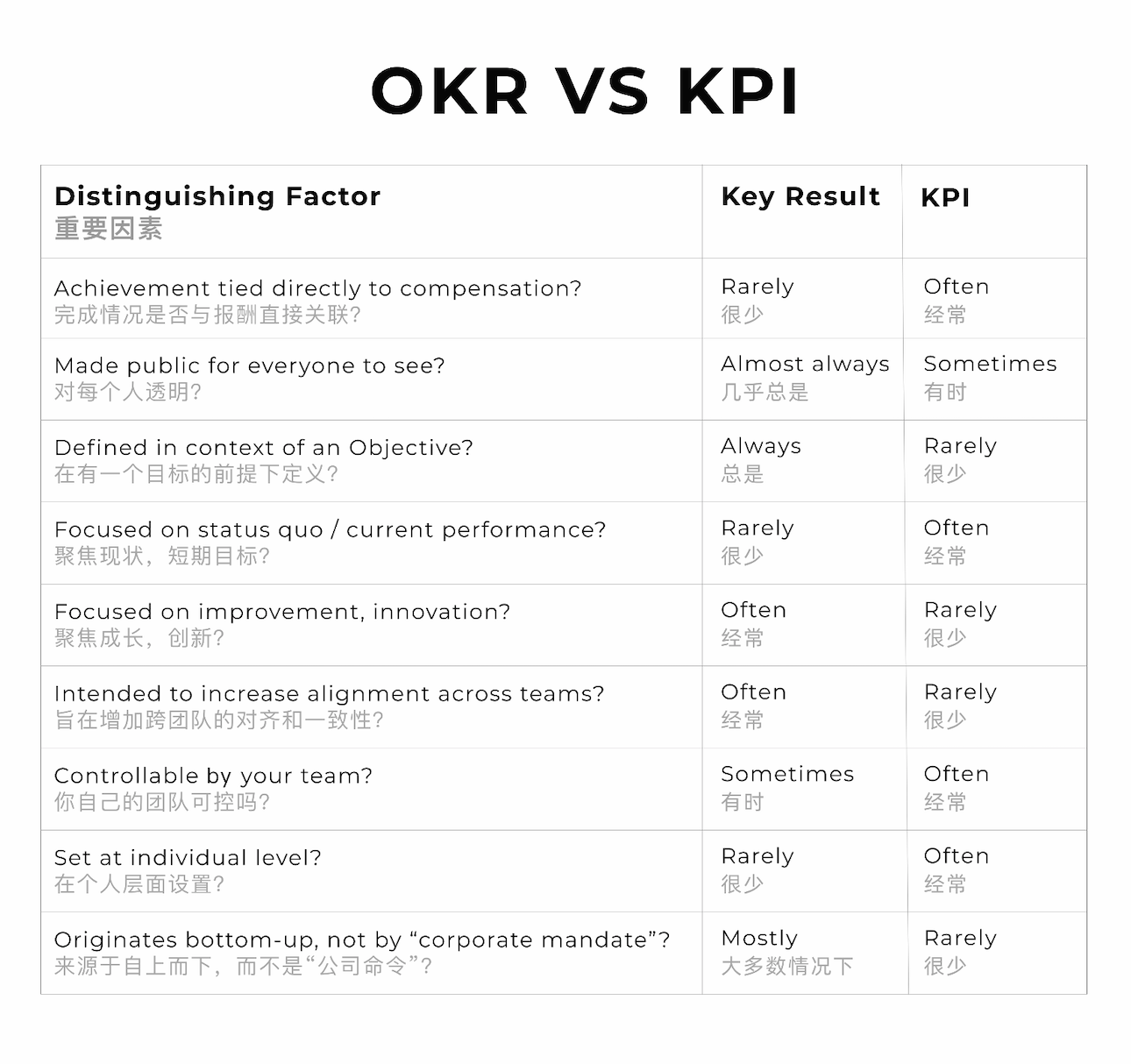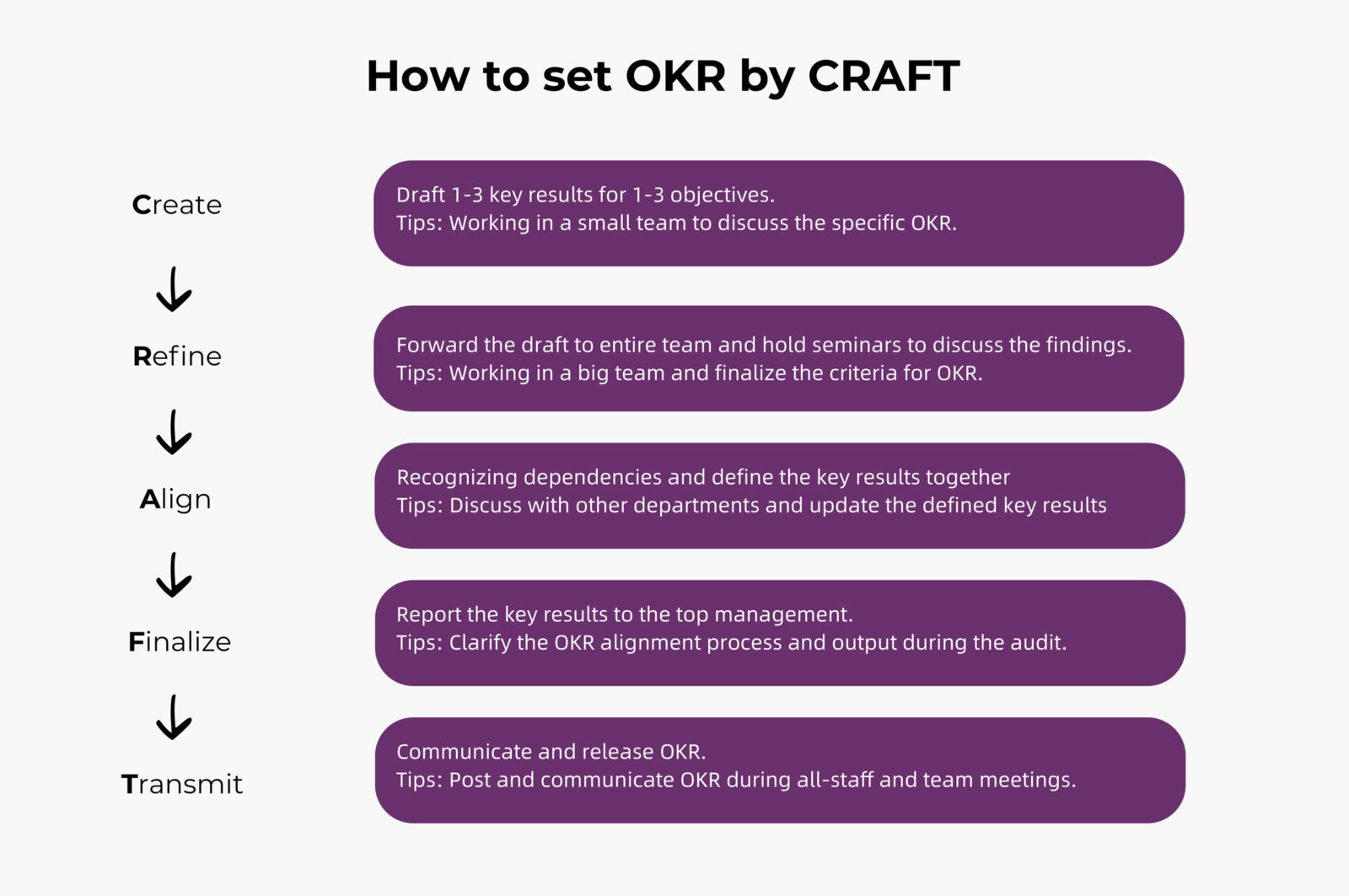
What is OKR?
OKR (Objectives and Key Results) is now widely used in agile enterprises. It is a simple and effective system for enterprises to carry out goal management. It can penetrate the goal management from the top to the bottom and can quickly collect each team’s creative inputs, as well as motivate employees.
OKR consists of two components:
O(Objectives)
Qualitative descriptions of set goals. Objectives should be attainable, inspirational, and challenging.
KR(Key Results)
2-5 key results that measure your progress towards the objective. For each objective, you should have a set of 2 to 5 key results.
What are the differences between OKR and KIP?

What’s unique about OKR?
1. Fasten Response Speed
The response speed of each company should match the existing uncertainty. In other words, companies should frequently reset their goals in response to undergoing innovative changes and rapidly changing environment. Keep a fast response speed is the key factor in setting high-efficiency goals. Similarly, the response speed is the cornerstone to ensure the sustainable development of enterprises under drastic changes (such as Covid-19).
Organizations can use continuous models for planning, decision-making, and tracking results to quickly adapt to changes.
2. Improve employee autonomy and participation rate
OKR connects employees with organization strategy and allows employees to freely decide how they will add value and make contributions to the company.
By having autonomy and participation, employees can fully participate in the behavior and decision-making of the organization. Therefore, employees are not only responsible for the delivery of results, but they also participate in the process, respect communication, and care more about the results.
3. Maintain consistent goals
This feature aligns employee goals with corporate strategy to establish common success standards among different teams while ensuring that these goals are healthy and sustainable in the long run.
How to set OKR?

Practice Guide of OKR:
OKR can be personalized at different company levels, team levels, or functional levels. Different groups may have different needs. For example:
1. Most of the company use quarterly OKR. However, each company has its own work pace according to business needs. For instance, some companies set OKR every 30, 45, 120, or 180 days. Similarly, different business departments may choose a different pace to meet their actual needs.
2. Although most companies use weekly results tracking methods, certain indicators are difficult to (or can’t) track their key results weekly. For example, a team that focuses on employee engagement may want to track results monthly instead of weekly.
3. Companies may want to set challenging goals for the product or engineering team. At the same time, more predictable goals for accounting and sales team. For these teams, they should focus on the challenging but achievable “Roofshots” goals, rather than the more idealized “Moonshots” goals.
What’s coming next?
In the next post, we will provide you with a useful tool to review employee performance and provide feedback on an individual basis.
Similar read:
Read about the transformation from LMS to LXP in China and APAC




aTalent